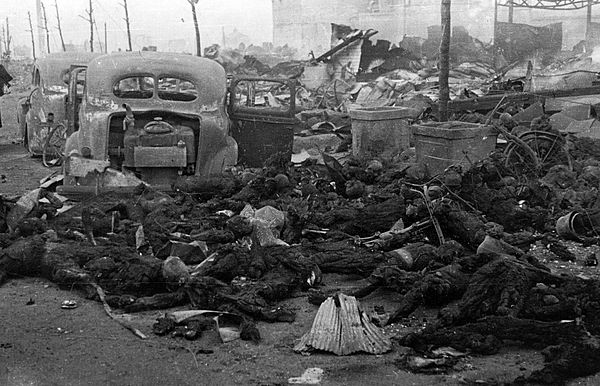1945
Operation Meetinghouse Burns Tokyo
In the 1930s the Japanese Empire launched a war to conquer China, expel Europeans and Americans from their Asian and Pacific holdings, and establish a Japanese hegemony. At its greatest extent in 1942, the Japanese “Greater East Asia Co-Prosperity Sphere” held sway over millions of square miles from Alaska to Burma.
The decision to attack the United States at Pearl Harbor in December 1941 was supposed to buy Japan enough time to conquer eastern Asia and present the Americans with a fait accompli. However, the failure to sink American carriers meant that a fight-back began very quickly and for the next few years, while American efforts were concentrated on Europe, the war in the Pacific consisted of a battle for a series of island chains ever closer to Japan.
Mainland Japan remained largely out of range of American bombers until late 1944 when new airbases on the Mariana Islands and new B-29 high-altitude bombers were brought into the fight. The failure of the Japanese kamikaze attacks deprived Japan of any effective air cover, making its cities virtually defenceless against B-29 raids using incendiary bombs.
On March 10, 1945, an air raid by almost 300 planes on Tokyo dropped 1,665 tons of bombs, mostly phosphorus or napalm. The resulting firestorm killed at least 100,000 people, injured hundreds of thousands more, and rendered a million Japanese homeless. The Americans lost 27 planes during the raid, some of them victims of huge winds which the bombing created.
Raids of this sort should have convinced the Japanese government that defeat was inevitable, but Hirohito’s cabinet held out until August, 1945 after atomic bombs destroyed Hiroshima and Nagasaki.
